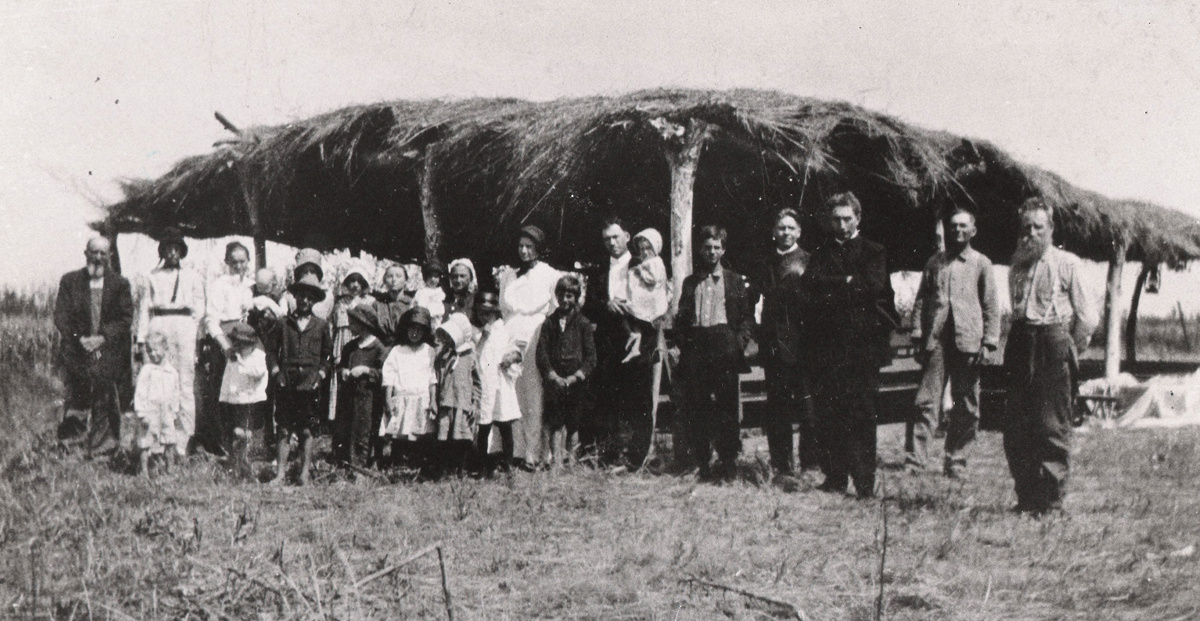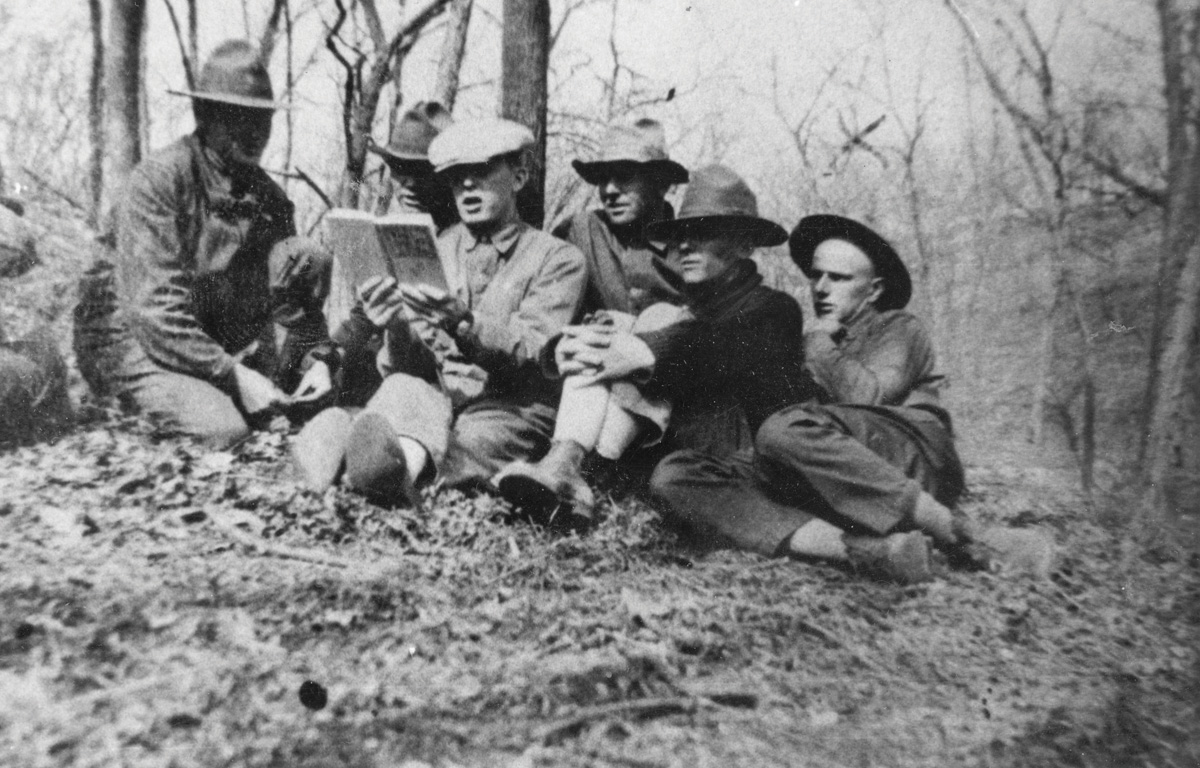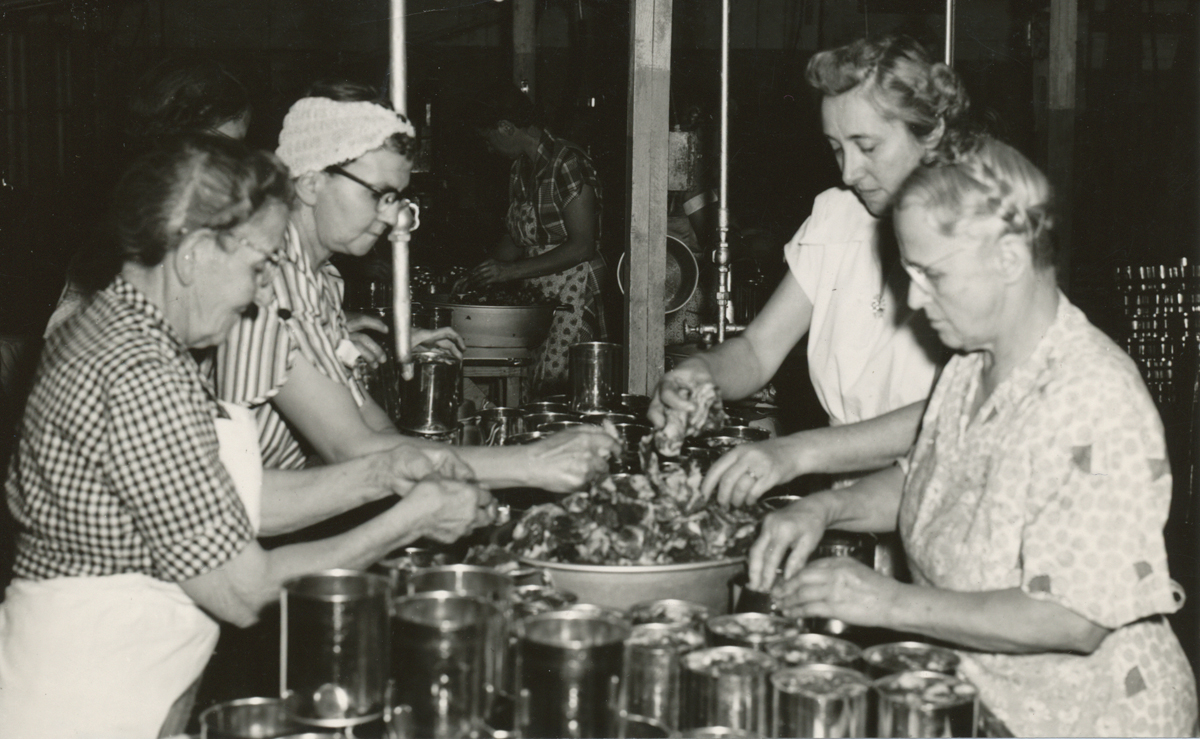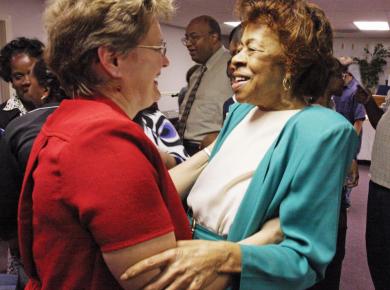Posted: May 19, 2016
A context for Anabaptist witness
The United States was formed, in 1776, as the first modern republic. Its founders believed they were engaging in a pioneering political experiment and granted relatively generous freedom of conscience to diverse Christian groups. It was also a nation in which, until 1865, at least 12 of every 100 people were enslaved men and women of African descent. The USA is also shaped by a history of immigration so that today people from all parts of the globe call the United States home. It has a highly complex economy, renowned research universities, a tradition of civil liberties and an extraordinarily large and globally active military. All of these factors provide a context in which U.S. Christians – including Mennonites and other Anabaptists – live.
Like other countries, the USA is also a nation of national myths. There is, for example, the myth of the “melting pot,” by which many U.S. Americans believe that assimilation is inevitable or benign or both. Perhaps more important has been the myth of “individual transcendence,” a promise that people can leave all tradition behind and start over anew, that the future is better than the past and that new equals improved. Americans in the USA are much more apt to deal with discontent by leaving a product, group or situation behind and starting over again rather than sticking with something old and working to improve or adapt it. This faith has animated U.S. society, influencing even its churches. The United States has birthed an unrivaled number of denominations and “independent churches” across the theological spectrum.
Two broad groupings
One way to think about Anabaptists in the USA, in very broad strokes, is to consider two groupings: those Anabaptists who are fairly integrated into mainstream economic and education patterns, and those Anabaptists whose daily routines clearly set them apart from their neighbors. The first group would include most members of Mennonite Church USA, the U.S. Conference of Mennonite Brethren, the Brethren in Christ (BIC) in the U.S., the Conservative Mennonite Conference and others. (All those listed above are Mennonite World Conference member churches.) While these sisters and brothers generally strive to live their faith in ways that make a difference in their local contexts, those contexts are very often professional, middle class and urban or suburban. These Mennonites and BIC typically get their news from conventional media sources, own private automobiles, believe that doing well in school is central to their children’s economic future and assume that health care should be better than it was for their grandparents.
In contrast, the Old Order Amish – the largest Anabaptist group in the United States with almost 12,000 baptized members – as well as Old Order Mennonites and a collection of related groups generally do not share these assumptions and values. From how they get dressed in the morning to the way they get to work and what they hope for their children, these Anabaptist are purposefully out of step with what the vast majority of U.S. citizens think is central to the good life. Tens of thousands travel with horses, reject higher education and refuse to put their trust in commercial insurance plans.
There are, of course, exceptions and variations in this broad pattern. Members of acculturated groups are likely to say that they go against the grain as pacifists and as people who champion high moral standards. And some Old Order Anabaptists are becoming more integrated into the national economy. Still, some of the first things observers from afar may recognize are differences between those who have adjusted to the basic contours of U.S. society – or, in the case of new immigrants and communities of color, are trying to gain greater access to those basic contours – and the so-called “plain” groups who resist in striking ways the national myths of assimilation and individual transcendence.
Stories of immigration and renewal
Mennonites first came to what would become the United States in small numbers in the 1600s. Larger waves of Mennonites and Amish emigrated from Western Europe in the 1700s and early 1800s, and Mennonites and Hutterites from the Russian Empire arrived in the 1870s. Slowly – sometimes very slowly – these Germanic churches opened themselves up to people from other backgrounds, including Native Americans on whose land Mennonite settlement had depended. Strict immigration laws locked out most newcomers in the mid-1900s, but since 1970 the USA has again received millions of immigrants each decade, including Mennonites from Asia, Africa and Latin America. Some Anabaptist immigrants have brought their church conferences with them. For example, the Sinode Jemaat Kristen Indonesia now has eight congregations on the West Coast of the USA; the Honduras-base Amor Viviente has churches in several Southern U.S. states. Similarly, when Mexican members of the Canada-based Evangelical Mennonite Mission Church (EMMC) immigrated to the USA, they started EMMC churches here (now known as Active Mission Conference).
The USA has also been a place in which spiritual renewal movements have spawned dozens of new Anabaptist church bodies. The Brethren in Christ emerged in the 1780s in Pennsylvania among Mennonites who warmed to Pietism and to a Wesleyan understanding of sanctification. In the mid-1800s, the Old Order renewal movement emphasized the practices of humility and contentment, along with a communal approach to faith and a belief that church discipline strengthened rather than hindered an individual’s relationship with God. In the twentieth century, the Conservative Mennonite Conference found renewal as the mission-activism of American evangelicalism leavened CMC’s Amish heritage. Pentecostalism has been a source of spiritual empowerment for segments of the U.S. Anabaptist world, too.
Paradoxes of growth
Today the U.S. Anabaptist world is simultaneously becoming more urbanized and ethnically and racial diverse and becoming increasingly rural and white. On the one hand, the growing edges of many Anabaptist bodies are congregations such as Casa del Dios Viviente BIC in Pompano Beach, Florida, or Hmong Mennonite Church in St. Paul, Minnesota. Half of Mennonite Brethren churches nationwide have a clear Latino, Asian-American, Slavic or African-American character. Calvary Community Church in Hampton, Virginia, with more than 2,200 mostly-African-American members, is the largest congregation in Mennonite Church USA.
At the same time, the largest numeric growth in the U.S. Anabaptist world is among Amish and Old Order Mennonite groups. Evangelically-oriented Mennonites and BIC often dismiss these groups’ growth since it virtually all comes from the ranks of their own offspring. Nevertheless, culturally conservative Anabaptist churches do a remarkable job of attracting and retaining their youth. The size and increase of these churches – although generally off the radar of most mainline Mennonite and BIC members – means that the U.S. Anabaptist population, as a whole, is slightly whiter and more rural, in percentage terms, than it was 30 years ago.
Contemporary realities and arenas of witness
1. U.S. Anabaptists are a very small part of a very large country. The United States positions itself as a global superpower and its economic and military choices affect the lives of people around the globe. U.S. Anabaptists are part of this superpower complex. But they do not command as much cultural attention as, for example, in Canada. Nor have they had much economic or political influence as, for example, in Paraguay. Being a tiny minority in the heart of a latter-day empire has often left Mennonites uneasy about their relationship with the state.
For some, including Old Orders, the major concern has been the state’s coercive powers of assimilation. They not only resist patriotic display and military participation, but also (in most cases) public education and public health programs. For other Mennonites, the oversized role the USA plays in world affairs and its frequent military adventures abroad make them deeply uneasy and, for some, call forth regular public protest. Either way, the size of the Anabaptist community vis-à-vis the nation has often resulted in a defensive or prophetic stance on public matters rather than, say, seeking to partner with government agencies to advance an Anabaptist vision of the world.
2. Anabaptists in the USA live in the midst of material abundance. Regardless of how comfortable they feel wearing the label of U.S. citizens, many Mennonites and BIC are, generally speaking, well off financially. The abundance that characterizes most Mennonite lives expresses itself in positive ways through charitable giving to church and civic causes, Mennonite and otherwise. Indeed, studies of philanthropy tend to rank Mennonites as generous givers compared with many other U.S. Christians. In addition to giving to global causes, acculturated Mennonites and BIC are also spending more money on themselves, building or renovated church structures often at a cost of a million dollars or more for a single project.
3. Predictable legal and financial systems in the U.S. have allowed Anabaptists here to create a host of institutions, from mission agencies and retreat centers to investment funds and retirement homes. The work of these large, professionally-staffed institutions receives a good deal of coverage in the Mennonite press, but it should not obscure the many, many ministries that operate with volunteers and limited resources – and make a tremendous difference in the people they touch. For example, hundreds of Mennonite and BIC congregations host preschools and childcare centers, ministries run by women that benefit thousands of families each year but receive none of the attention that Mennonite colleges and universities do.
4. Anabaptists in the USA live in a pluralistic society that shapes their worship and witness. Many Anabaptist churches sing hymns and contemporary songs written by Protestant and Roman Catholic musicians. Meanwhile, the style and spirituality of the charismatic movement has flavored worship in sizable numbers of congregations. Other congregations have adopted the ecumenical Revised Common Lectionary and the calendar of the Church Year to order their life together. Some Mennonite and BIC peacemakers work with Catholics and evangelicals to end the death penalty or support unwed mothers. Still others have joined with interfaith groups to address environmental concerns.
5. Anabaptists in the USA are connected to the world in many ways. Some links are through business or the work of Mennonite Central Committee, Mennonite Economic Development Associates or Christian Aid Ministries. Other connections come through travel, adoption, marriage or hosting international students. Some congregations have formed sister-church relationships with Mennonite or BIC congregations in other parts of the world. U.S. Anabaptists have much to learn from the world family of faith. May the next Assembly, Pennsylvania 2015, allow even more connections to form and flourish!

Steven M. Nolt is professor of history at Goshen College (Goshen, Indiana, USA), and the co-author (with Canadian Royden Loewen) of Seeking Places of Peace—North America, the fifth and final entry in the Global Mennonite History series.

A “brush-arbor tabernacle” constructed for Brethren in Christ evangelistic meetings in Leedy, Oklahoma, in 1919. The BIC represent one U.S. Anabaptist community shaped by numerous spiritual renewal movements. Photo courtesy of the Brethren in Christ Historical Library and Archives

Mennonite Central Committee (MCC) service worker Michael Sharp visits with Elizabeth Namavu and her children as part of his work in the eastern Democratic Republic of Congo. Many Mennonites and BIC from the U.S. have developed global connections, sometimes through service with MCC. Photo by Jana Asenbrennerova

During World War I, many Mennonite and BIC men were imprisoned for refusing, because of their commitment to the gospel of peace, to enlist in the military. Here, several Mennonites sing hymns while in prison. Photo courtesy of Mennonite Church USA Archives

In the early 1950s, women from the First Mennonite Church in Bluffton, Ohio, USA, can meat for Mennonite Central Committee relief programs to distribute worldwide. Photo courtesy of Bluffton University Archives

Overflow, a worship band comprised of young adults from Latino/a Brethren in Christ congregations in and around Miami, Florida, perform at a 2014 church conference. One third of all BIC in the USA speak Spanish. Photo by Will Teodori/BIC U.S. Communications

Join the Conversation on Social Media
FacebookTwitterInstagramFlickrYouTube